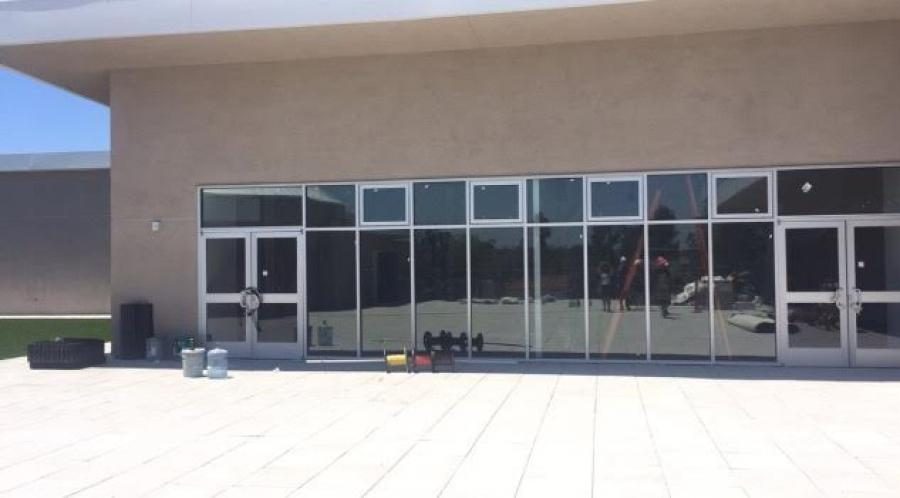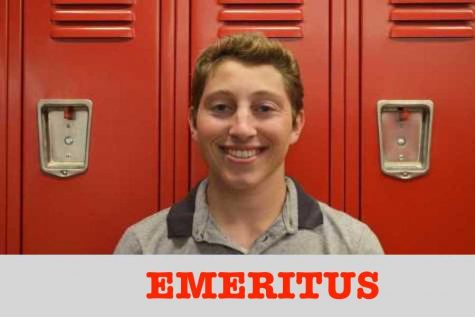Just Community to take up davening
TRIBES: Above, the Beit Midrash hosts Hashkama minyan and a 9th-10th grade minyan, while the 11th-12th grade minyan is in the Beit Knesset next door. Twelve small windows represent the 12 tribes Below, the wooden Aron in the Beit Midrash.
September 17, 2015
In meetings planned for the first two weeks of school, Shalhevet students will help develop ideas for davening options this year in the administration’s latest attempt to crack the code of student spirituality.
Dress code and other school challenges will be considered as well in the meetings, which will be led by the Agenda Committee as part of what is called the “Just Community Reorientation.”
But talking, quiet texting, extended bathroom breaks and ditching have all been signs of students’ not relating to the twice-a-day requirement for prayer. Agenda leaders and administration hope the community will formulate ideas to enhance davening.
“We’re trying to make students know that part of being a Shalhevet student is going to davening,” said Agenda Committee Chair Micah Gill, “and once we accept this, how can we work together, faculty and students, to create davening in a much better environment and a much better atmosphere?”
“We’re not trying to redefine davening,” Micah said. “We’re trying to redefine how we approach davening.”
Rabbi Ari Schwarzberg will be in charge this process.
“I’ll be working on trying to work with the students, and the Just Community in particular, to figure out avenues for tefillah (prayer) at Shalhevet to be both more meaningful, more effective and more disciplined,” Rabbi Schwarzberg said in an interview.
Smaller, more tailored minyanim and even discussions are possible ways that he and other Judaic studies faculty will try to enhance students’ davening experiences, he said.
“We really would like to focus on working in small groups with students who truly find the tefillah experience to be uninspiring to them,” said Rabbi Schwarzberg.
In addition, the arrangement of space in the new building, combined with rising enrollment, means prayer will usually be more divided. Enrollment this year is expected to be 227 students, and the Beit Midrash holds only 110 students and the Beit Knesset just 60.
Instead of one main Shacharit minyan as in past years, there will be a joint 9th-10th grade minyan in the Beit Midrash and a joint 11th-12th grade minyan in the Beit Knesset. Both are located on the third floor.
For Mincha, every grade will have its own minyan.
A new biyur tefillah, or explanatory minyan, led by different Judaic Studies teachers, will also be offered, along with a Girls Singing minyan and Meditation minyan, as in previous years.
Hashkama Minyan, which starts at 7:25 a.m. and gives students a free period during school-wide morning davening, will be held in the third-floor Beit Midrash.
For community wide prayer on holidays like Yom Ha’atzmaut or Yom Yerushalayim, said Principal Reb Noam Weissman, davening will be held in the gym, which can accommodate all students.
“The Beit Midrash and Beit Knesset are both amazing places to connect,” said Reb Weissman. “They’re opportunities both to connect in tefilla and talmud torah and it’s going to allow the learning and the davening to really have the opportunity for the students to experience them in the fullest.”
Rabbi Schwarzberg would prefer not to rely on his ideas alone.
“My hope is that the ideas are mostly from the student body or the student leaders,” said Rabbi Schwarzberg. “The idea is to involve the just community and student leadership in this process, hopefully more so than in the past, and the number one goal is for it to be beneficial for the students.”














